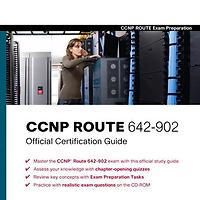1. EIGRP verification
a. show ip eigrp interfaces
network command에 의해 EIGRP가 활성화된 인터페이스를 보여준다.
하지만 passive interface는 생략된다.

b. show ip protocols
network configuration command에 의한 내용을 보여준다.
routing process, list of neighbor IP adds.

c. show ip eigrp neighbors
neighbors에 대한 정보를 출력한다. parameter가 일치 하지 않는 neighbors는 출력하지 않는다.

d. show ip eigrp topology
successor and feasible routes를 출력한다.
하지만 이는 all known topology를 자세하게 출력하지는 않는다.

e. show ip route
IP routing table을 확인한다. D Code가 eigrp 에 의한 routing 을 말한다.

2. EIGRP의 구동

Step 1. Neighbor discovery - potential neighboring EIGRP routers에게 EIGRP router 는 Hello Packe를 보낸다. 패킷을 받은 뒤 basic parameter를 체크한 뒤 neighbor가 되는 것을 결정한다.
Step 2. Topology Exchange - Neighbors 관계가 갖춰지고 난 뒤 Neighbors는 full topology updates를 교환한다. 그러고 나서는 changes에 대한 부분적으로 update한다.
Step 3. Choosing Routes - 각 라우터는 respective(각자의) EIGRP topology 테이블을 분석하고 lowest-metric route를 선택한다.
a. Exchanging Topology
* EIGRP는 224.0.0.10 의 Multicast IP address를 사용한다.
* OSPF와는 다르게 DR이라는 개념이 없지만 multicast를 통해 routing information을 효율적으로 교환한다.
* 업데이트 message는 RTP(Reliable Transport Protocol)을 통해 전달된다.- RTP는 Real-time Transport Protocol이라고도 불린다.)
* OSPF와는 다르게 DR이라는 개념이 없지만 multicast를 통해 routing information을 효율적으로 교환한다.
* 업데이트 message는 RTP(Reliable Transport Protocol)을 통해 전달된다.- RTP는 Real-time Transport Protocol이라고도 불린다.)
b. Calculating the Best Routes for the Routing Table
Metric 공식

least-bandwidth = the lowest-bandwidth link in the route, using a unit of KB/s
예를들어 10Mbps ethernet link라면 10^7 / 10^4 이다. 10Mbps = 10^4 Kbps
cumulative(누적)-delay value = sum of all the delay values for all links in the route, using a unit of " tens of microseconds"
3. EIGRP Neighborships
Step 1. Establish EIGRP neighbor relationships with other routers that share a common subnet
Step 2. Exchange EIGRP topology data with those neighbors
Step 3. Calculate the currently best IP route for each subnetm based on the known EIGRP topology data, and add those best routes to the IP routing table.
a. Manipulating EIGRP Hello and Hold Timers
Step 1. Establish EIGRP neighbor relationships with other routers that share a common subnet
Step 2. Exchange EIGRP topology data with those neighbors
Step 3. Calculate the currently best IP route for each subnetm based on the known EIGRP topology data, and add those best routes to the IP routing table.
a. Manipulating EIGRP Hello and Hold Timers
EIGRP는 neighbors를 확인하기위해서 Hello message를 사용한다.
EIGRP에는 2개의 Timer가 있는데 hello timer는 기본적으로 5초이고, hold timer는 15초이다.
만약 hold timer 동안 hello packet을 받지 못하면 router는 neighbor가 끊어졌다고 생각한다.
EIGRP에는 2개의 Timer가 있는데 hello timer는 기본적으로 5초이고, hold timer는 15초이다.
만약 hold timer 동안 hello packet을 받지 못하면 router는 neighbor가 끊어졌다고 생각한다.
- EIGRP Hello and Hold Timer Configuration
- R1(config-if)#ip hello-interval eigrp [ASN] [time] -> ip hello-interval eigrp 9 2
R1(config-if)#ip hold-time eigrp [ASN] [time] -> ip hold-time eigrp 9 6

- 찾아보니 Hold-timer 에 대한 부분은 Hello-Timer의 3배라는 말이 있더군요.
- 명령어가 동작하지 않는 부분은 전에는 hold timer를 설정할 수 있었으나 IOS가 업데이트 되면서 hold-timer를 설정안해도 자동으로 3배로 적용되지 않는가 싶습니다. 차후 확인해 보도록 해야겠네요.
p.35
-Passive Interface
-Authentication
/////////////////////////////////////
- EIGRP Metric Components
- EIGRP는 아래의 값들을 사용한다.
- Bandwidth
- Delay
- Reliability
- Load
- EIGRP Metric = 256*((K1*Bw) + (K2*Bw)/(256-Load) + (K3*Delay)*(K5/(Reliability + K4)))
- Default Value
- K1 = 1
- K2 = 0
- K3 = 1
- K4 = 0
- K5 = 0
- How to chane Metric value
- R1(config)#router eigrp 1
- R1(config-router)#metric weight [0-8] [0-256] [0-256] [0-256] [0-256] [0-256]
- 처음의 0-8은 Type of Service
- 만약 K-value가 다르면 neighbor로 연결되지 않을 수 있다. 하지만 이는 다른 라우터에서 mismatch되는 정보가 들어오면, 쉽게 확인할 수 있다.
- 그리고 K-value는 아래와 같이 #show ip protocols로 확인할 수 있다.

- EIGRP의 Router-ID(RID)
- 라우터의 RID를 결정할때 이는 OSPF의 결정방식과 같은 방식을 사용한다.
- Step 1. Use the configured value (using the eigrp router-id a.b.c.d EIGRP subcommand).
- Step 2. Use the highest IPv4 address on an up/up loopback interface.
- Step 3. Use the highest IPv4 address on an up/up non-loopback interface.
- P.48의 내용을 참고하면...
- EIGRP의 Router ID는 거의 필요하지는 않다. 하지만 외부의 라우터를 EIGRP에 injecting 할때 confusion을 회피하기 위해서 쓰인다고 한다.
- Neighbors Over WAN
- 일반적인 LAN에서 사용하는 설정방법과 크게 다르지 않다. 하지만 라우터와 다른 라우터의 neighbor가 되는 design and opertaional 이 다르긴 하다.
- Neighborship on F/R
EIGRP introduction 에 대한 CIsco Learning center의 동영상 강의
http://www.cisco.com/E-Learning/bulk/public/ccnp/EIGRP_QLM/player.html

